Sony X90L is a premium model from the Japanese manufacturer, which premiered in 2023 but will successfully continue into 2024. The Sony brand and the name Bravia are associated with excellent picture quality, and this model confirms that reputation – it offers great brightness and very good blacks. Despite having fewer local dimming zones than the competition, it makes up for it with an advanced algorithm. Additionally, after calibration, the television presents very well-rendered colours, resulting in a natural and cohesive image associated with IMAX cinema. In everyday use, X90L performs excellently, mainly thanks to the picture processor that effectively upscales lower resolution content, as well as the recording function from the built-in tuner, which is becoming increasingly rare in today's televisions. Sony is also strongly linked to the world of PlayStation, and in this regard, X90L Sony does not disappoint. It comes equipped with HDMI 2.1, VRR, ALLM, and a convenient Game Bar, making it a good choice for gamers who expect smooth gameplay and quick response times. However, even in such a successful model, there are some drawbacks. Gamers may be disappointed by the lack of support for HGiG, which could improve image quality in HDR games. Furthermore, Sony has yet to release an update that would reduce input lag in Dolby Vision mode – something achieved in the higher-end model, the A95L. Those who prefer slimmer devices should know that although Sony X90L looks elegant with its aluminium frame, it is not among the thinnest televisions on the market. Even though X90L already has a year behind it, it remains a solid piece of equipment that combines good picture parameters with functionality and support for gamers. It’s a successful choice for those looking for a versatile high-end television.
- Matching (Score)
- Our verdict
- TV appearance
- Where to buy
- Contrast and black detail
- HDR effect quality
- Factory color reproduction
- Color reproduction after calibration
- Smoothness of tonal transitions
- Image scaling and smoothness of tonal transitions
- Blur and motion smoothness
- Console compatibility and gaming features
- Input lag
- Compatibility with PC
- Viewing angles
- TV efficiency during daytime
- Details about the matrix
- TV features
- Apps
- Playing files from USB
- Sound
Sony X90L vs Samsung S85F OLED
Direct compare
X90L
S85F / FAE / FAU
Available screen sizes: 55”

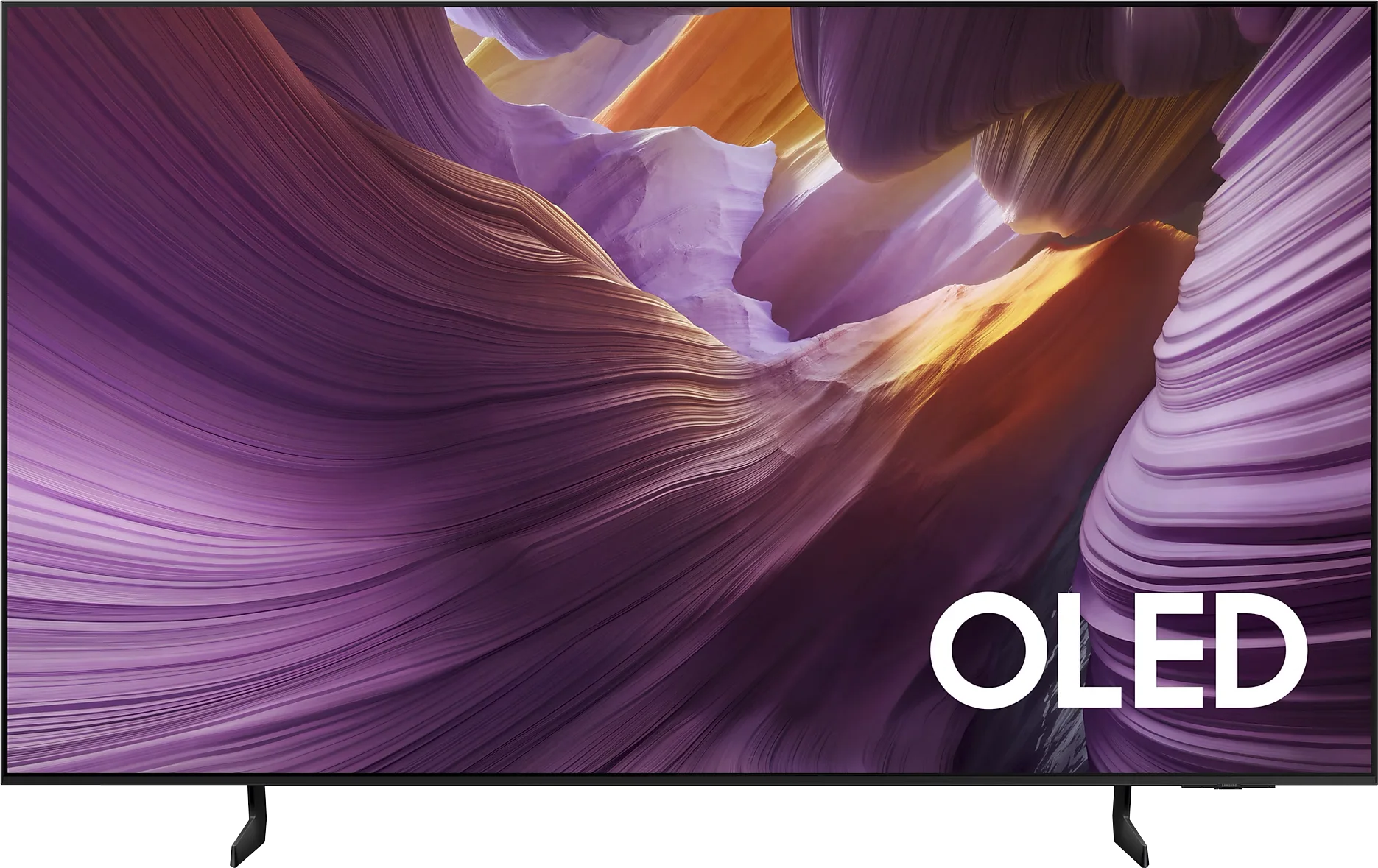
Panel type: LCD VA
Resolution: 3840x2160
System: Google TV
Model year: 2023
Complete the survey to find out the result

Panel type: QD-OLED
Resolution: 3840x2160
System: Tizen
Model year: 2025
Complete the survey to find out the result

Overall rating
7.7
8.0
Movies and series in UHD quality
7.5
8.3
Classic TV, YouTube
7.5
9.0
Sports broadcasts (TV and apps)
7.4
8.8
Gaming on console
7.9
9.3
TV as a computer monitor
7.4
7.6
Watching in bright light
7.8
5.1
Utility functions
8.5
7.2
Apps
9.6
8.7
Sound quality
7.0
7.2
Complete the survey to find out what fits your preferences
Advantages
120 Hz matrix – great for gamers and sports fans
Good black and contrast reproduction thanks to advanced local dimming algorithm
Supports HDMI 2.1, VRR, ALLM and Game Bar – ideal gaming features
High SDR brightness (785 cd/m²) – performs excellently in well-lit rooms
Google TV operating system – intuitive, rich in apps and customisation
TV program recording function without the need for an external decoder
Natural image scaling – image without excessive sharpness, looks realistic
Outstanding black levels and contrast
Amazing colour palette coverage thanks to the QD-OLED panel
Great picture quality in SDR and HDR content
High colour accuracy after calibration
Very good motion smoothness – 120 Hz OLED panel
Rich set of features for gamers: VRR, Game Bar, low input lag
4 HDMI 2.1 ports with full 48 Gbps bandwidth
Advanced and smoothly operating Tizen system
Solar Remote with multiple capabilities
Disadvantages
No support for HGiG
Cannot enable VRR and Dolby Vision at the same time
Only 2 HDMI 2.1 ports, including 1 e-ARC
The TV isn't the slimmest – this may be a downside for those who prefer ultra-thin models
No USB recording function and PiP
No Dolby Vision
Slight cherry black under very strong external light (not visible when watching in cinema conditions)
No HGiG function*
* This function disappeared with software update 1110.7 – we are monitoring this situation closely.
Our verdict
The Samsung S85F with a QD-OLED panel is capable of surprising – and in a very positive way. Even before the tests, we did not think that in the case of TVs often referred to in the context of "panel lotteries", one could come across something that would benefit the user. Yet, in this case, particularly with the 55-inch version, it has fully succeeded. The QD-OLED panel, as expected from organic technology, offers near-perfect blacks and contrast in cinematic conditions. However, the difference lies in the way the colours are rendered – here it is simply exceptional. The colour gamut coverage is impressive, and after a slight calibration, the colours become almost exemplary. Motion fluidity is also at a very high level. The 120 Hz panel handles both sports and action films excellently. And if someone plans to connect a console to the S85F, they will receive a full set of advantages: low input lag, variable refresh rate, Game Bar, and full HDMI 2.1 support. In everyday use, we were supported by the Tizen system – closed, but extremely polished. It responds quickly, offers a rich selection of apps, and features like AirPlay and voice control make it hard to find anything more complete in this category. True, the S85F is not without its flaws. However, the balance of pros and cons is exceptionally favourable here. One could even get the impression that it is one of the best TVs in its price segment.
TV appearance





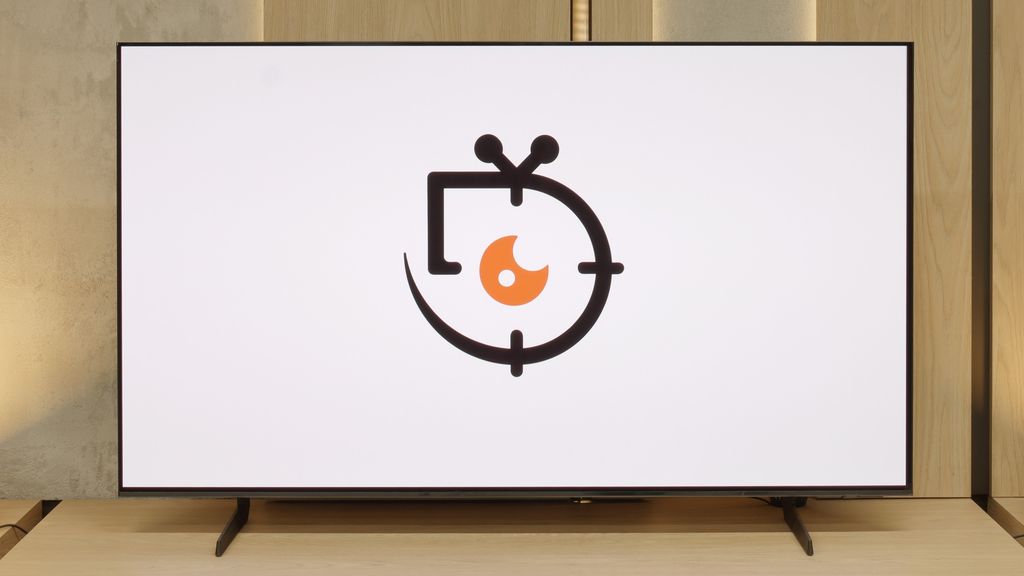

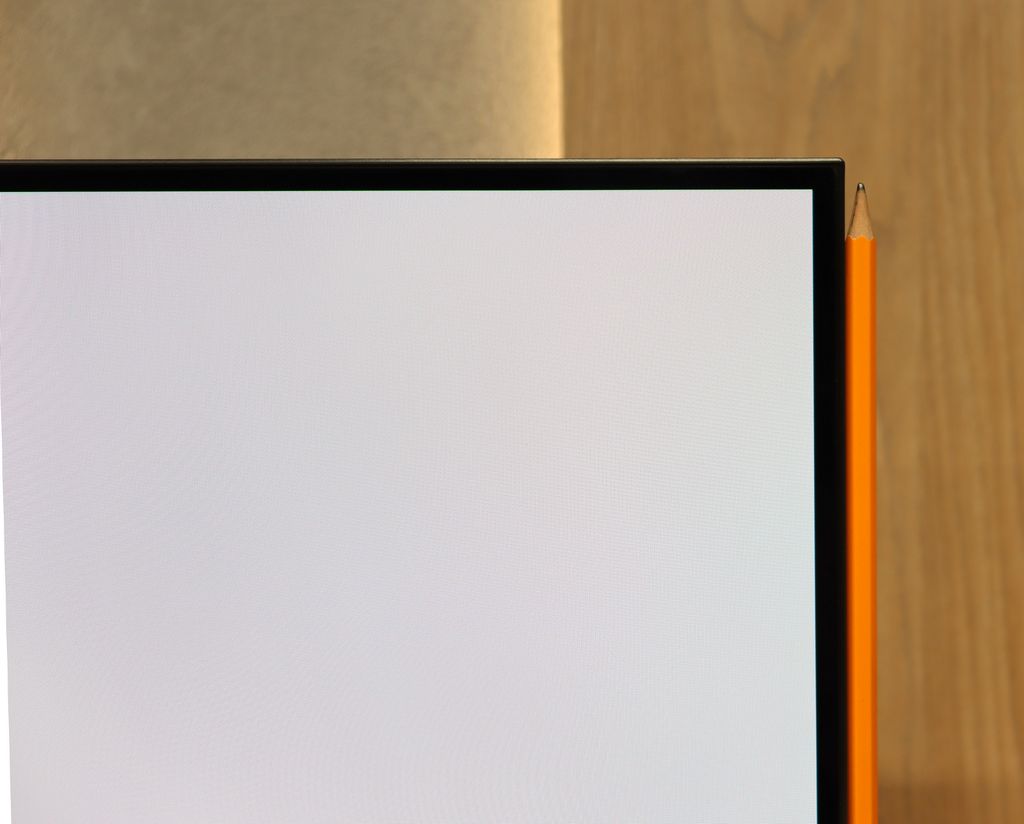
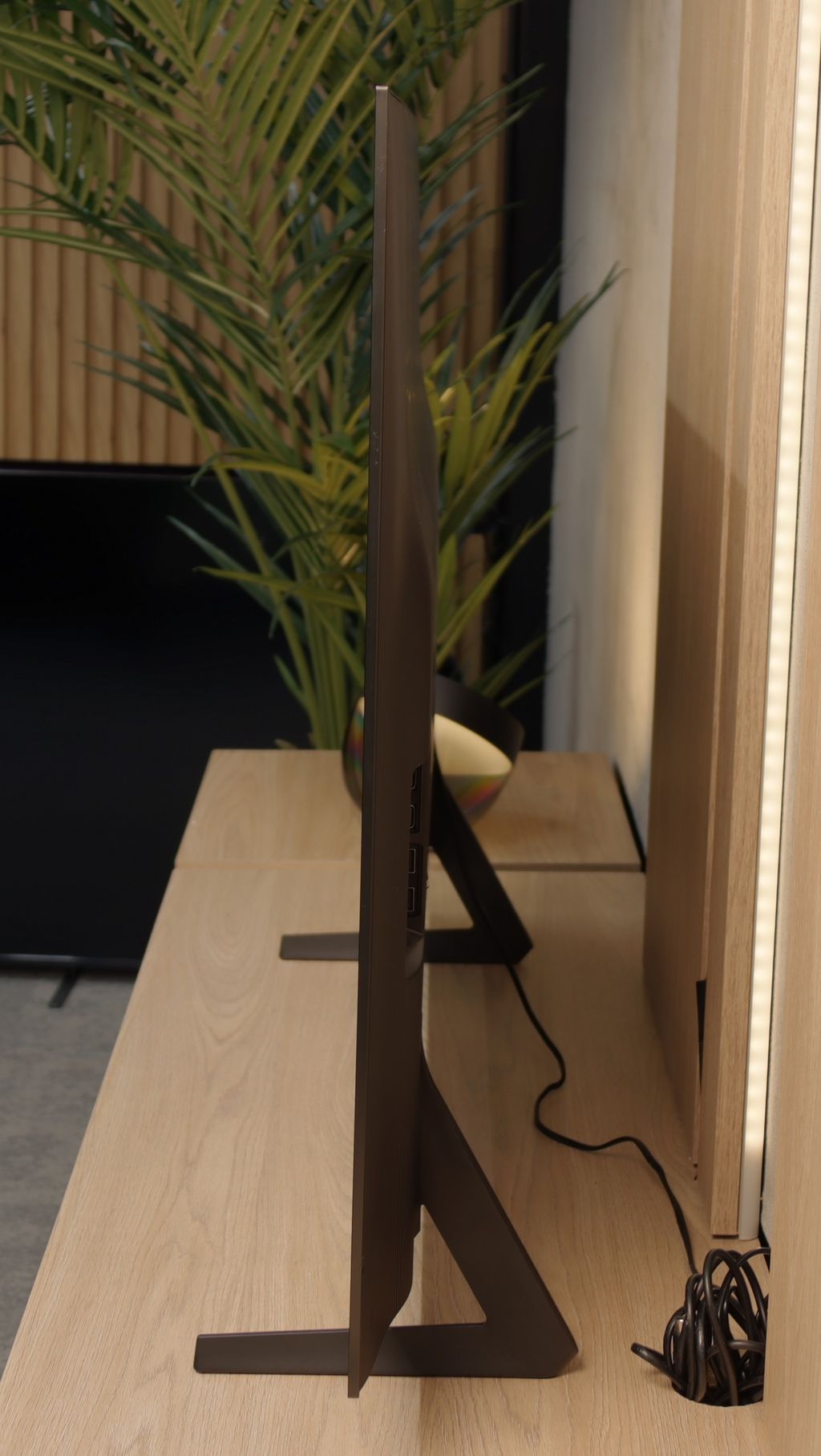
Contrast and black detail
7.6/10
10/10
Local dimming function: Yes, number of zones: 88 (11 x 8)
Contrast:

Result
87,500:1

Result
14,400:1

Result
99,250:1

Result
9,550:1

Result
6,300:1

Result
∞:1

Result
∞:1

Result
∞:1

Result
∞:1

Result
∞:1
Halo effect and black detail visibility:

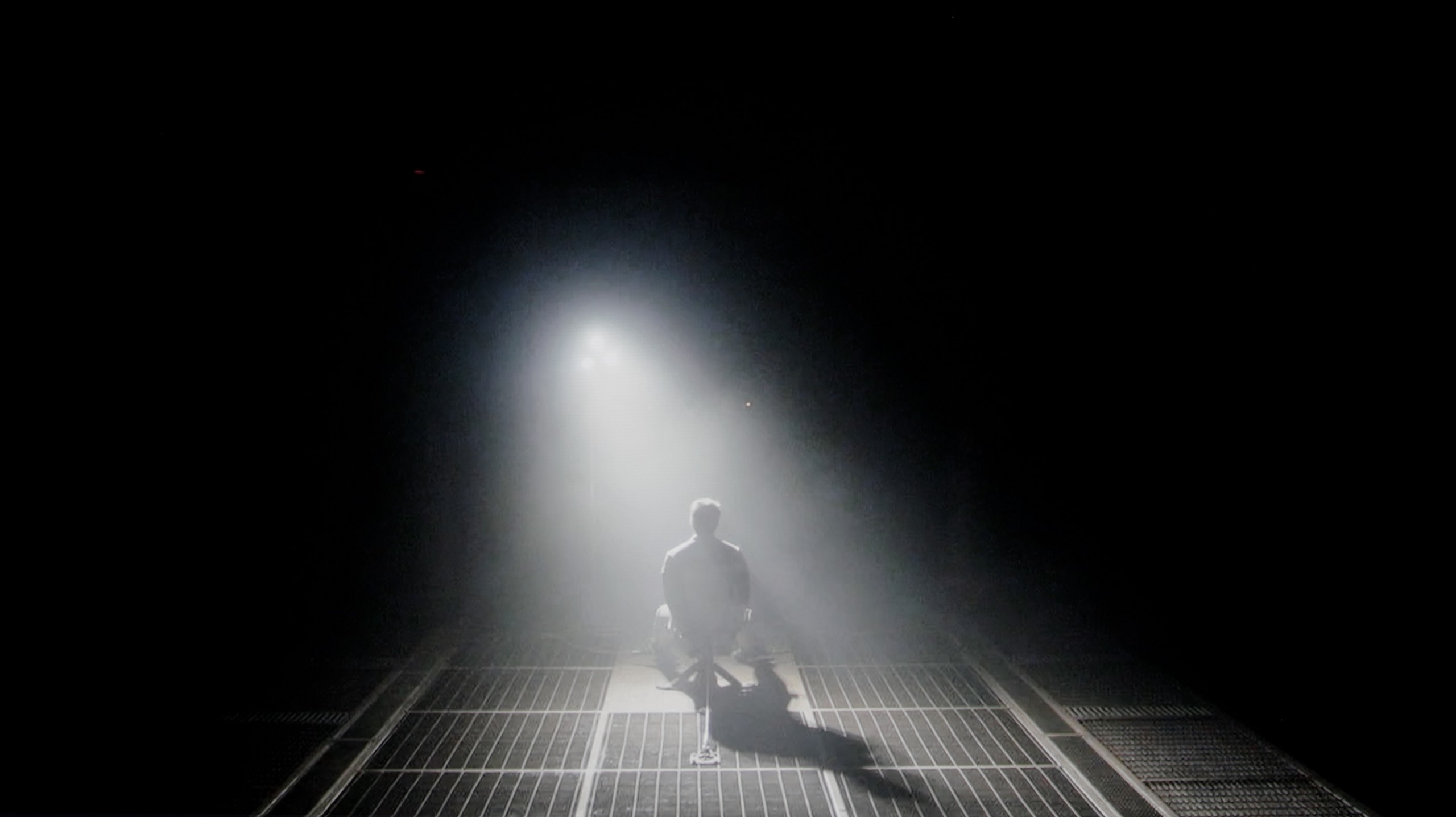
The Sony X90L television is equipped with a VA panel and in the tested size of 65', it has 88 backlight zones. It may seem that such a number of zones doesn't make a big impression, but thanks to the local dimming algorithm, the television handles blacks exceptionally well. This is clearly visible on the first and third test screens, where the contrast reaches nearly 100,000:1. In more demanding scenes, the X90L doesn't achieve such spectacular results – a contrast level of 6000:1 is just fine. The light separation performs really well, which is confirmed by a scene from the film "Oblivion". However, the small number of backlight zones means that the halo effect is noticeable, especially in the test footage from "Sicario 2", where the helicopter lights cause quite a significant flare over a large area of the screen. Despite the limited number of backlight zones, the Sony X90L does really well in reproducing blacks. Although it doesn't match the top series of miniLED or OLED televisions in terms of black depth and contrast level, it offers solid results that are sufficient for most demanding users.
Samsung S85F in the 55-inch version has something special – it features a QD-OLED panel. This might sound quite surprising, but that's the fact, at least in Poland. So the question arises: is the difference compared to last year's S85D with a WOLED panel even noticeable? Yes, although in this specific test – black levels and contrast – it practically makes no difference.
Regardless of the scene, the S85F presents infinite contrast and perfect blacks that we expect from any OLED. These results can impress even the most demanding film enthusiasts. It's worth remembering that only TVs with organic panels can provide such deep blacks – and it doesn't matter whether it's WOLED or QD-OLED. So if you dream of a screen that can 'turn off' the light in a scene just as effectively as a boutique cinema in a dark room, the S85F is one of those TVs.
HDR effect quality
6.7/10
6.2/10
Luminance measurements in HDR:

Result
912 nit

Result
680 nit

Result
678 nit

Result
640 nit

Result
797 nit

Result
666 nit

Result
703 nit

Result
742 nit

Result
732 nit

Result
433 nit
Scene from the movie “Pan” (about 2800 nits)


Scene from the movie “Billy Lynn” (about 1100 nits)


Static HDR10


Dynamic: Dolby Vision
Dynamic: HDR10+


HDR luminance chart:
Samsung S85F OLED
Luminancja HDR
Luminance of RGB colors
Sony X90L
Luminancja HDR
Luminance of RGB colors
HDR on the Sony X90L television looks promising. The luminance chart indicated that the TV has a solid power reserve, achieving a maximum of 1000 nits in synthetic tests. But how does this perform in real-world scenarios? In scenes such as the opening of Life of Pi or the final sequence from The Meg, the TV is capable of delivering that power on HDR content, reaching around 800 nits. Unfortunately, displaying small light elements on a black background, like in the scene from Sicario 2, presents greater challenges for the X90L – here the results reach around 600 nits. Nevertheless, when looking at competitive models with mini-LED technology, the effect looks very good and can shine enough to impress us. The colour gamut coverage is also noteworthy, with a result of 96% for DCI-P3 and 76% for BT.2020, which indicates good colour reproduction in HDR content.
As an OLED, the Samsung S85F can shine – literally. In favourable conditions, it can generate brightness exceeding 750 nits. This is significant because most films are created with displays aiming for around 1000 nits. In practice, this means that in scenes with moderately large, bright elements, the picture can look absolutely stunning. However, it's not always so rosy. When an enormous amount of light appears on the screen – whether it's an expansive, bright background or an entire frame filled with white – the S85F must tone it down. Brightness can drop by even four times in such scenes. This limitation is well-known to anyone familiar with OLEDs in this price segment, so we don't view it as a particular fail. However, something that deserves praise is what sets this model apart from the competition – colour gamut coverage. Thanks to the QD-OLED panel, our colour meter indicated values exceeding 100% coverage of DCI-P3 and an impressive 86% for the ultra-wide BT.2020 palette. Such results are hard to find even in televisions that cost several times more.
Factory color reproduction
6.2/10
5.5/10


Factory Mode
After calibration
The best mode on Sony televisions is the IMAX Enhanced mode. Although IMAX is mainly associated with the cinema experience, the colour reproduction out of the box is average here. In the case of lower quality materials, such as HD – regular television or YouTube – it's worth paying attention to the white balance. It suffers from a shortfall in red and excessive dominance of blue, which gives the image a pinkish hue. The brightness characteristic, or gamma, for HD content is quite acceptable, but a slight boost can cause the image to appear washed out and look as if it’s behind a light fog.
For 4K HDR content, the situation is somewhat different. The white balance shows a significant boost in blue, which makes the image unnaturally sharp and gives it an artificial feel. Such an exaggeration in colour reproduction may not appeal to everyone, especially if one prefers more realistic tones. Additionally, the EOTF curve in Sony X90L looks quite acceptable at first glance. However, at the end of the graph, there are certain fluctuations that suggest the television is trying to maintain the correct brightness to avoid overexposing larger elements.
Samsung, as befits a manufacturer with ambitions, has equipped the S85F with a mode called Filmmaker. Its task is simple: to make the colours on the newly purchased television as faithful as possible to what the director intended to show us. Sounds great… but, as is often the case, a theory that sounds wonderful doesn’t always translate into perfect practice.
In the tested unit, it quickly became apparent that the image – due to an excess of blue and red – looked as if someone had gone a bit overboard with the saturation. As a result, there were quite significant colour errors, particularly in 4K content. On top of that, there was an issue with brightness – the S85F could brighten most scenes more than it should, stripping them of the intended mood.
Fortunately, Samsung televisions, including the S85F, offer an impressive number of settings for advanced calibrators. This means that we could see what this panel is really capable of when it gets into the right hands.
Color reproduction after calibration
9.1/10
9.3/10

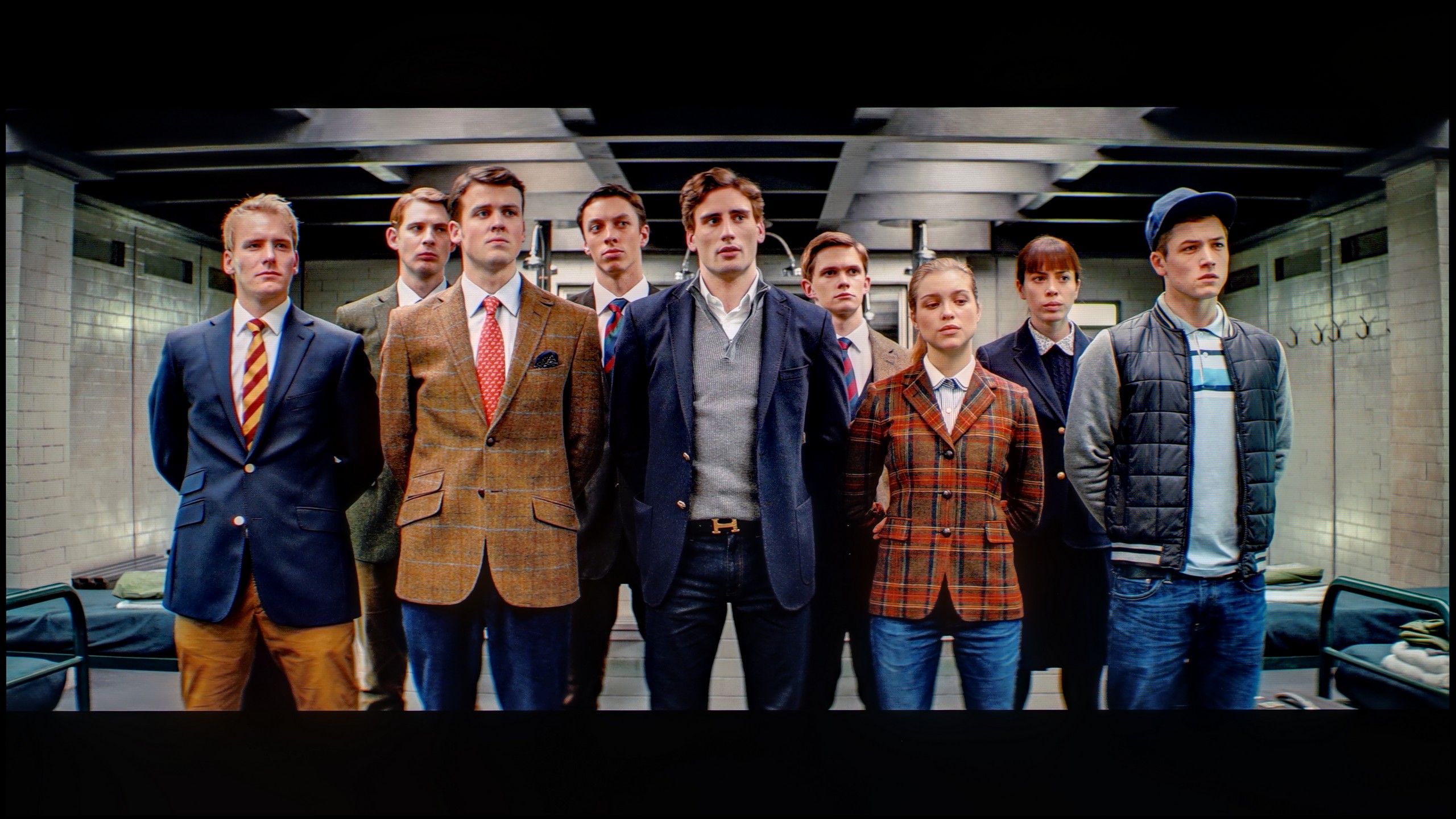

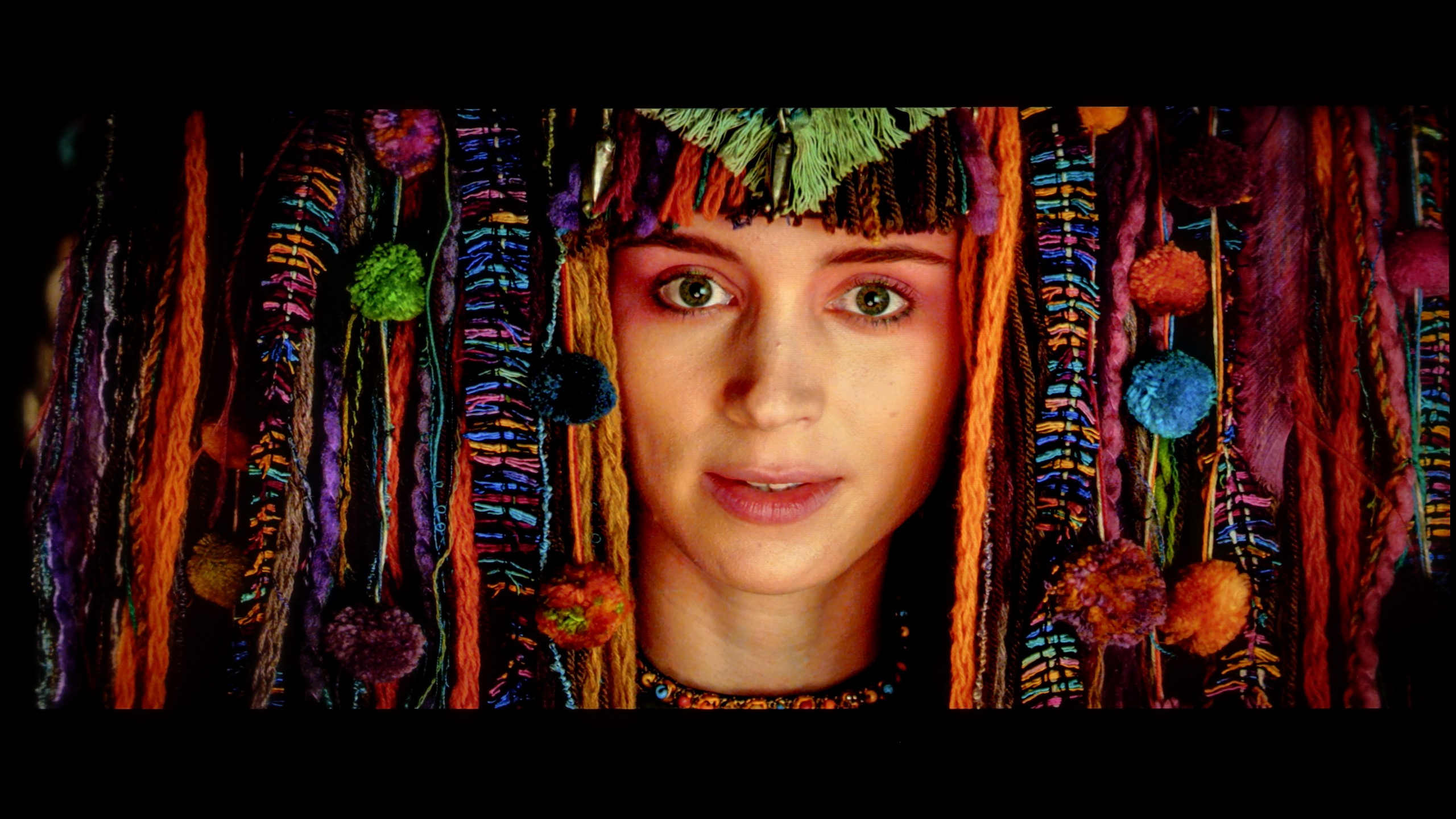
Sony offers many tools for improving picture quality, including two extra picture modes that we decided to use during testing and apply calibration to. This solution greatly simplifies the calibration process and is very effective, provided you have the right tools. In the case of HD content, white balance was almost perfectly aligned – only one shade of grey exceeds an error value of "1", which is a great result. The same can be said for the brightness characteristic (gamma), which presents almost perfectly, with microscopic deviations of around 0.01.
For 4K HDR content, the situation is not as ideal. Although white balance has been significantly improved, it was not possible to completely eliminate the dominance of blue. Nevertheless, errors in the Colour Checker test only occasionally exceed the value of "2", which means that picture distortions are practically unnoticeable. When it comes to the EOTF curve, it's worth activating the filter in the top right corner "EOTF in Films" – the graph looks correct, but the TV struggles with illuminating very small elements, which is due to the limited number of backlight zones. Despite these minor errors, it's thanks to the calibration that the IMAX Enhanced mode in the Sony X90L makes watching movies feel like a true cinema experience.
Thanks to the huge number of settings in the menu, we managed to bring the S85F almost to perfection. White balance in SDR content? Literally perfect – deviations do not exceed a value of "1". So we can confidently say that in materials with not too high dynamics, we have an image that's close to reference.
In HDR content, minor issues appeared, but they don't have much significance in practice – most errors fall below the threshold of perception, which is a value of "3". We also managed to tame the S85F when it comes to brightness management – the EOTF curve, even in films, holds nearly perfect straight line. This is one of those cases where after calibration, you can comfortably forget about the settings and simply watch movies and series at the highest level.
Smoothness of tonal transitions
9.2/10
7.9/10







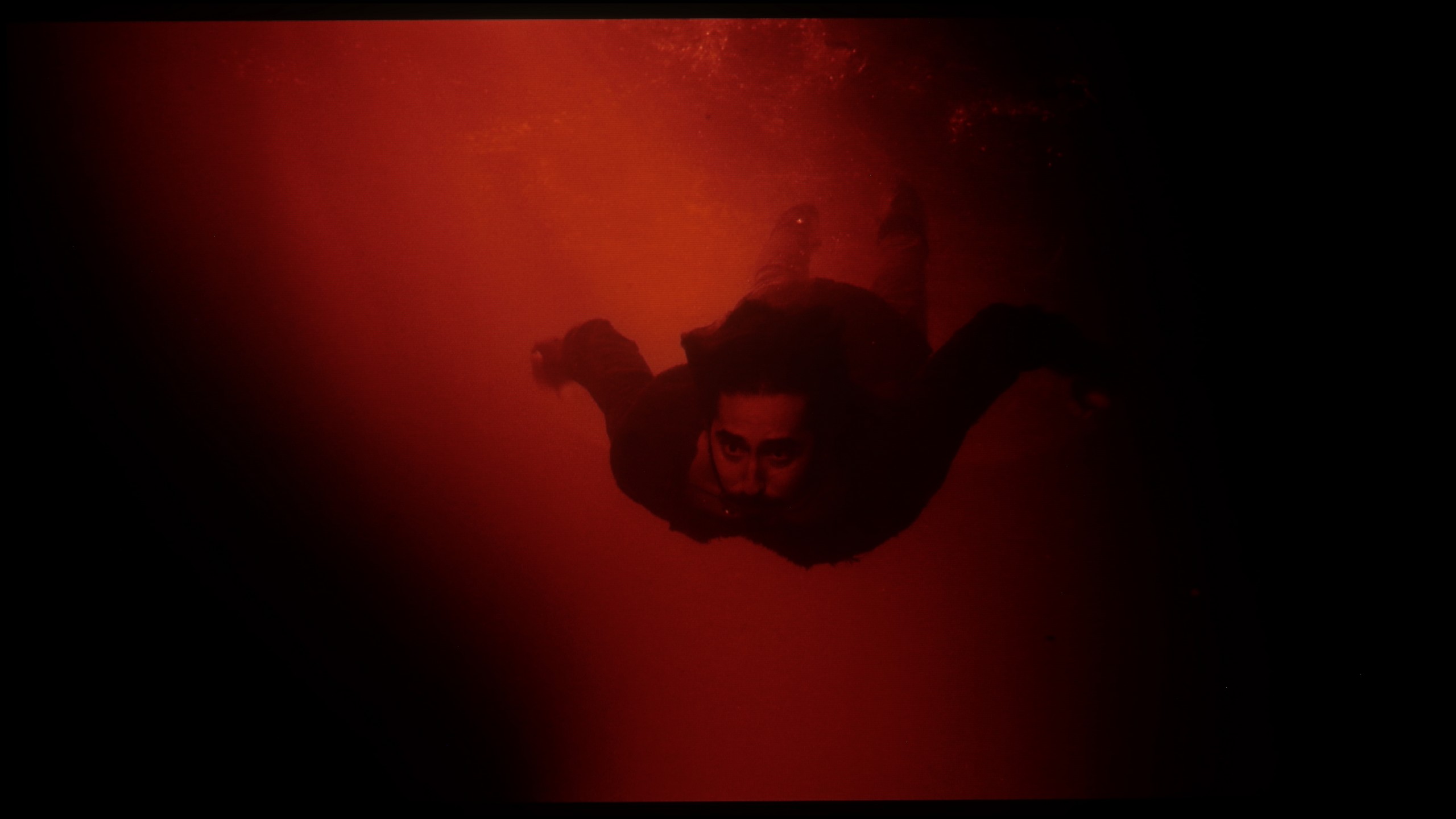




The smoothness of tonal transitions in Sony X90L is excellent. The gradation is beautiful on high-quality sources such as streaming in 4K. One can only notice slight cuts on more demanding gradients, but the overall effect is very good and should satisfy even the most discerning viewers.
Thanks to the QD-OLED panel, colour blending on the S85F is really very good. It's particularly worth noting how it performs in the darkest, most demanding scenes – where most TVs start to struggle, this model operates almost perfectly.
Interestingly, a slight stumble can be noticed in those easier, brighter shots. There is minimal colour banding, but it's so subtle that it's hard to believe it would genuinely bother anyone during viewing.
Image scaling and smoothness of tonal transitions
8.5/10
7/10
Smooth transition function

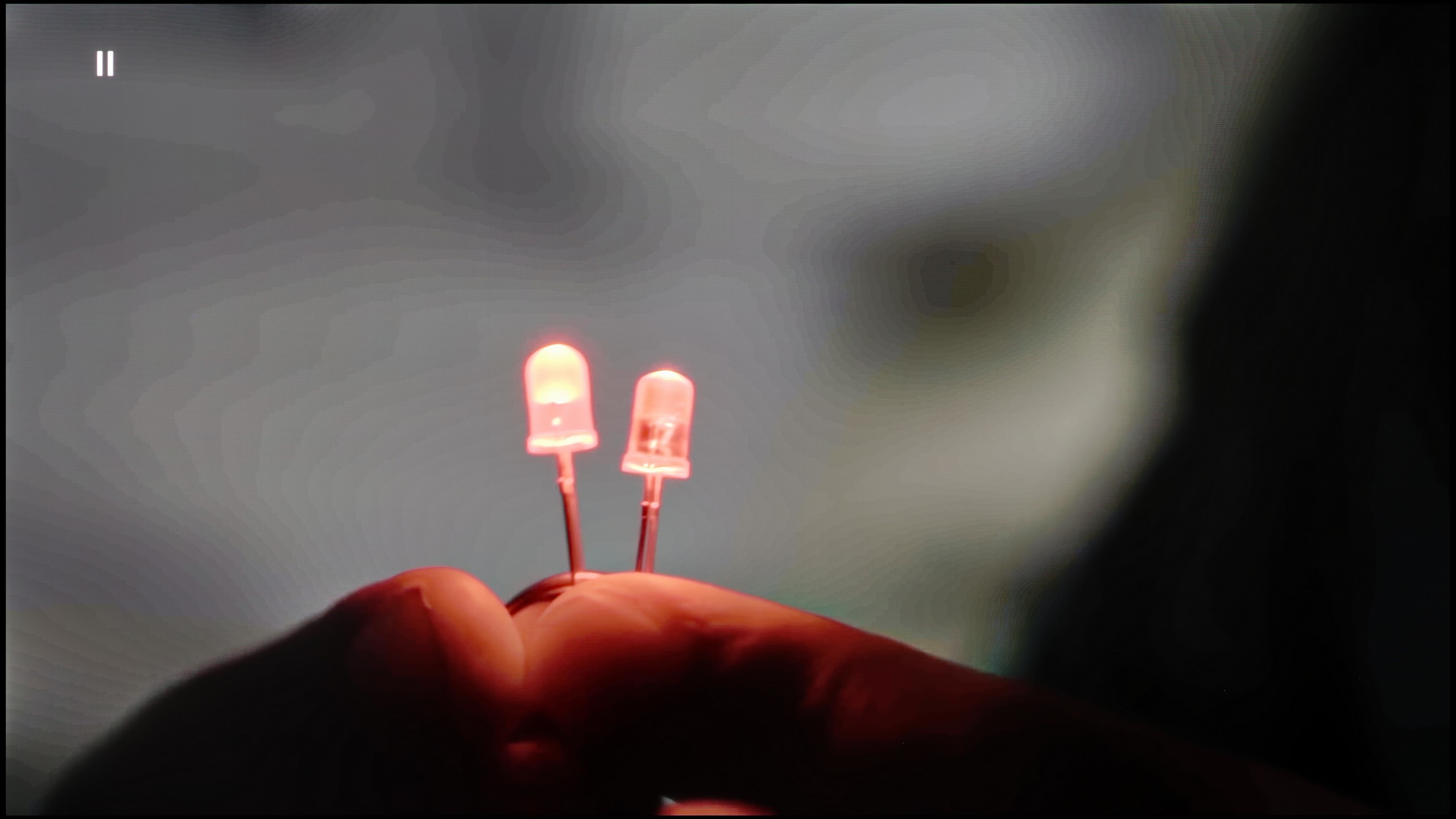
Image without overscan on the SD signal


The Sony X90L television features a smooth tonal transition function known as Gentle Gradation, which is incredibly effective. Even at the "low" setting, the effects are satisfactory, but at the "medium" setting, it works like a dream – we recommend using this option for the best results. The image scaling on the Sony X90L is simply excellent. The image is not overly sharpened, which gives a natural effect and makes everything look cohesive. It's clear that the engineers have really put effort into this aspect, creating a solution that impresses and performs well in everyday use. This means that even when watching content like regular television or YouTube, where the image is by nature not stunning, you can enjoy a smooth, coherent, and visually pleasing experience.
The tone transition smoothing function in the S85F works really effectively – it can completely eliminate the problem of visible banding in very poor quality material, such as from YouTube. Unfortunately, even the lowest level of this option comes with compromises. The noise reduction is so aggressive that it can smooth out film grain, which many of us consider to be an element of the cinematic atmosphere. At the “Standard” level, we didn’t notice this function removing anything significant from the image, so we can recommend this setting. On the other hand, the “High” level is a different story – it can smooth out not just noise, but also small, desirable details like, for example, the texture of objects.
When it comes to image scaling, the S85F performs very well. The material looks sharp, and the only slight imperfection is the barely noticeable aliasing of edges. And there’s the ongoing issue with Samsung televisions – overscan. This can cause some scenes to be slightly cropped, which is worth noting when watching very old content.
Blur and motion smoothness
8.1/10
8.5/10

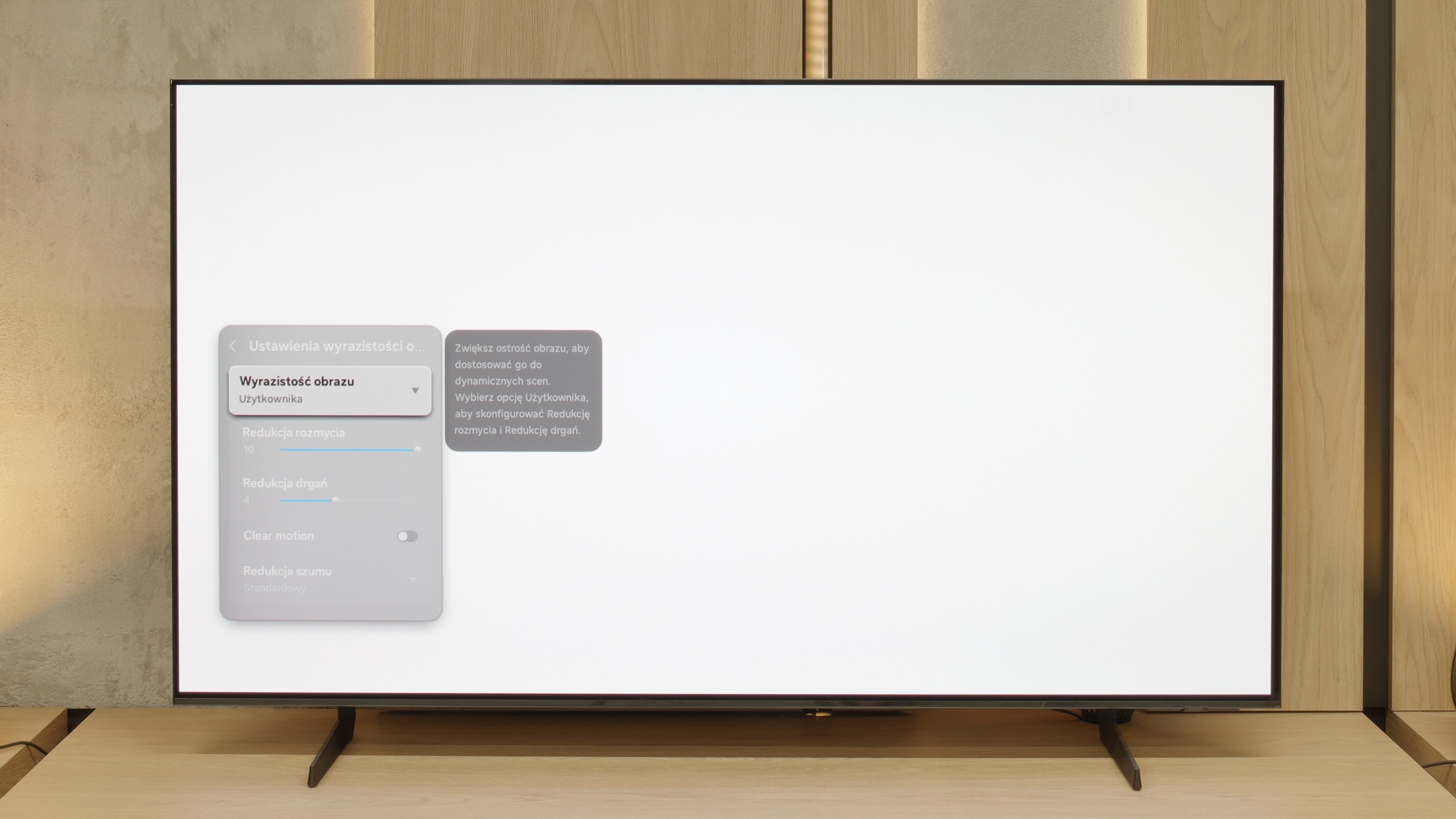
Blur (native resolution, maximum refresh rate):






Blur (BFI function enabled):



Image flickers in this mode



Smużenie ():
Smużenie (4K@60Hz Game Motion Plus):



Sony X90L with a 120 Hz display is an excellent choice for both gamers and film enthusiasts. The television is equipped with the Motion Flow smoothing feature, which allows for adjusting motion smoothness using two sliders: "smoothness" and "clarity". The "smoothness" slider controls the level of motion fluidity, which affects the reduction of image stuttering, while "clarity" is used to reduce blurriness and enhance motion sharpness, which is especially useful in dynamic scenes.
S85F is an incredibly fast television – and that’s not just empty hype. Thanks to the 120 Hz OLED panel, dynamic scenes, whether in games or while watching a live match, look just as they should – smooth, sharp, and without the feeling that something is "slipping" out of frame. The lightning-fast pixel response time, typical of OLEDs, plays a big role here. Transitions between frames are virtually instantaneous, and the image remains clear even during the fastest camera movements. A ball flying across half the field? A car speeding in a chase scene? Everything here is clear and free of the typical "trail" associated with LCDs.
This is exactly what we expect from a good OLED – zero compromises when it comes to motion smoothness. The S85F gives the impression that regardless of the pace of action, we can focus on what’s happening on the screen, rather than on the imperfections of the image.
Console compatibility and gaming features
7.8/10
8.2/10
- ALLM
- VRR
- VRR range48 - 120Hz48 - 120Hz
- Dolby Vision Game Mode
Yes, high input lag
- Correct implementation of HGIG
- 1080p@120Hz
- 1440p@120Hz
- 4K@120Hz
- Game bar

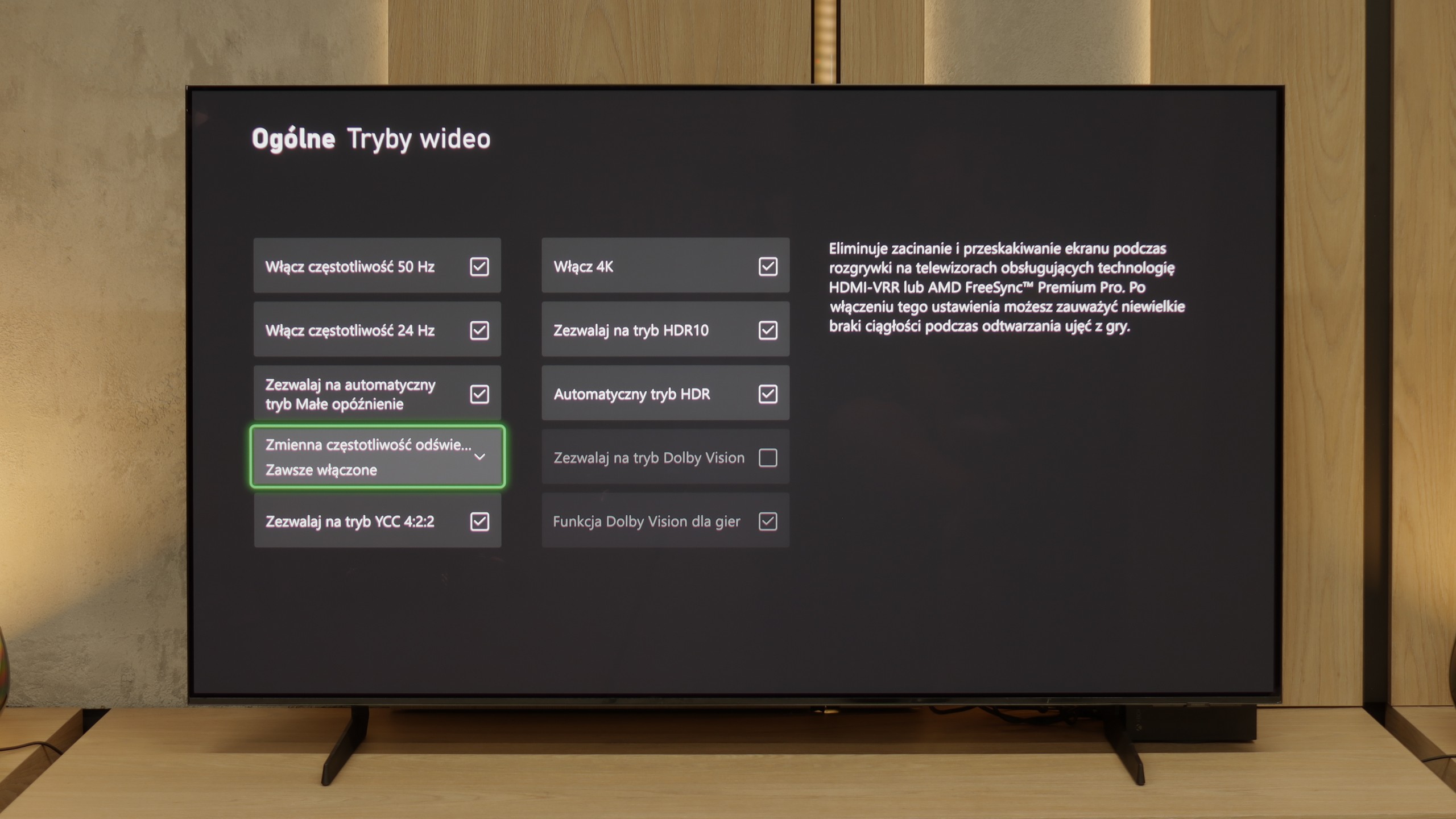

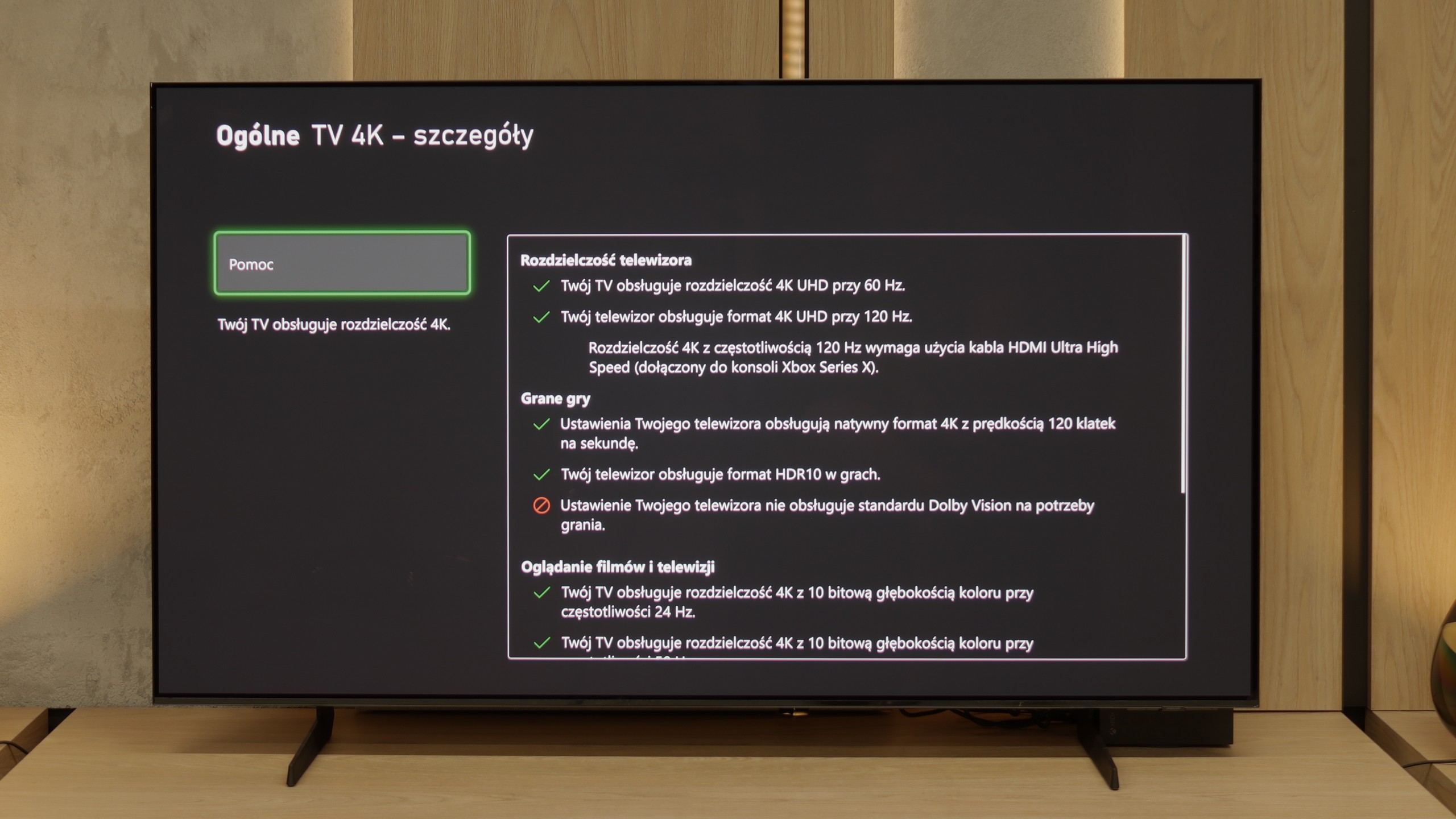

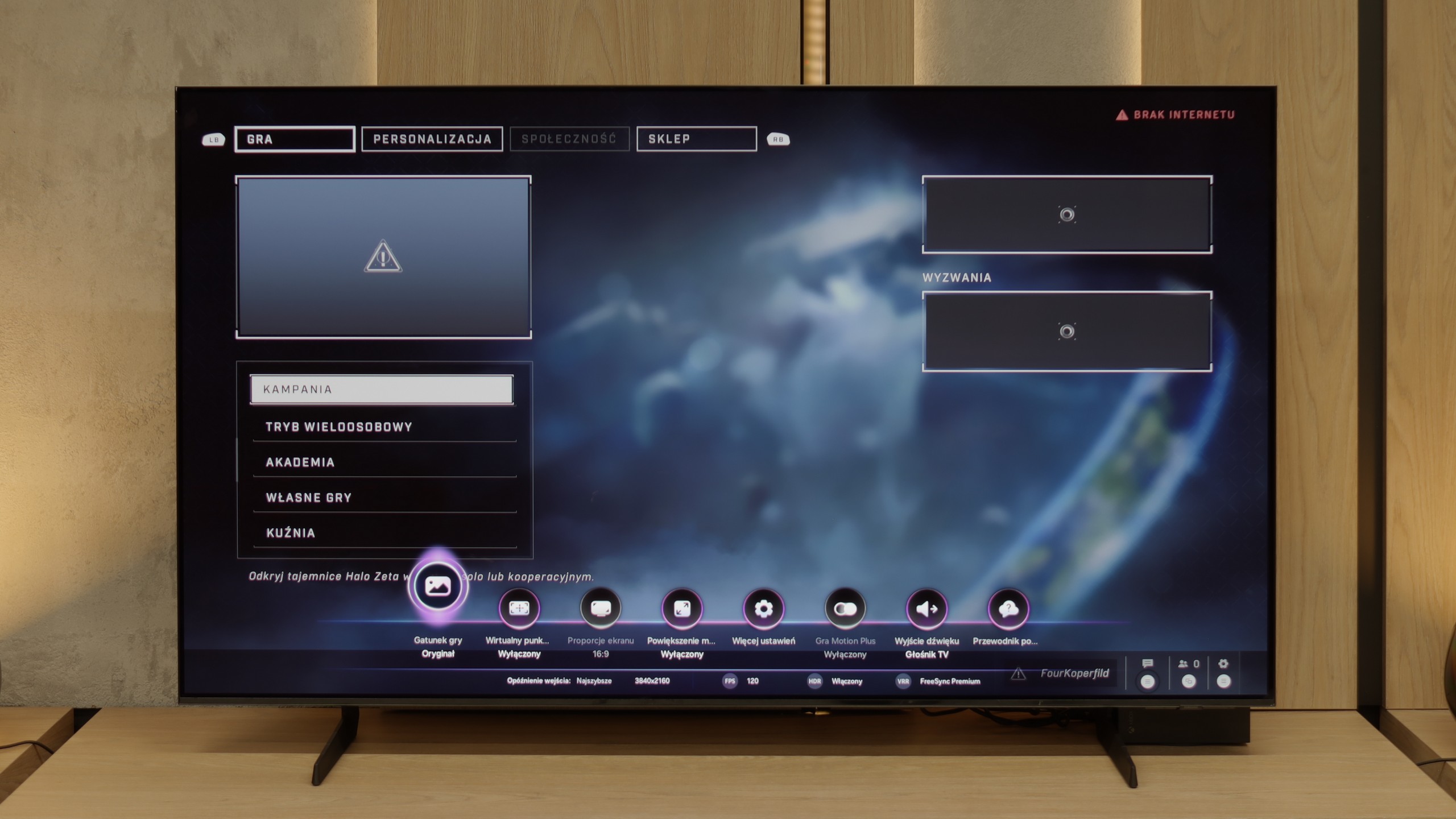

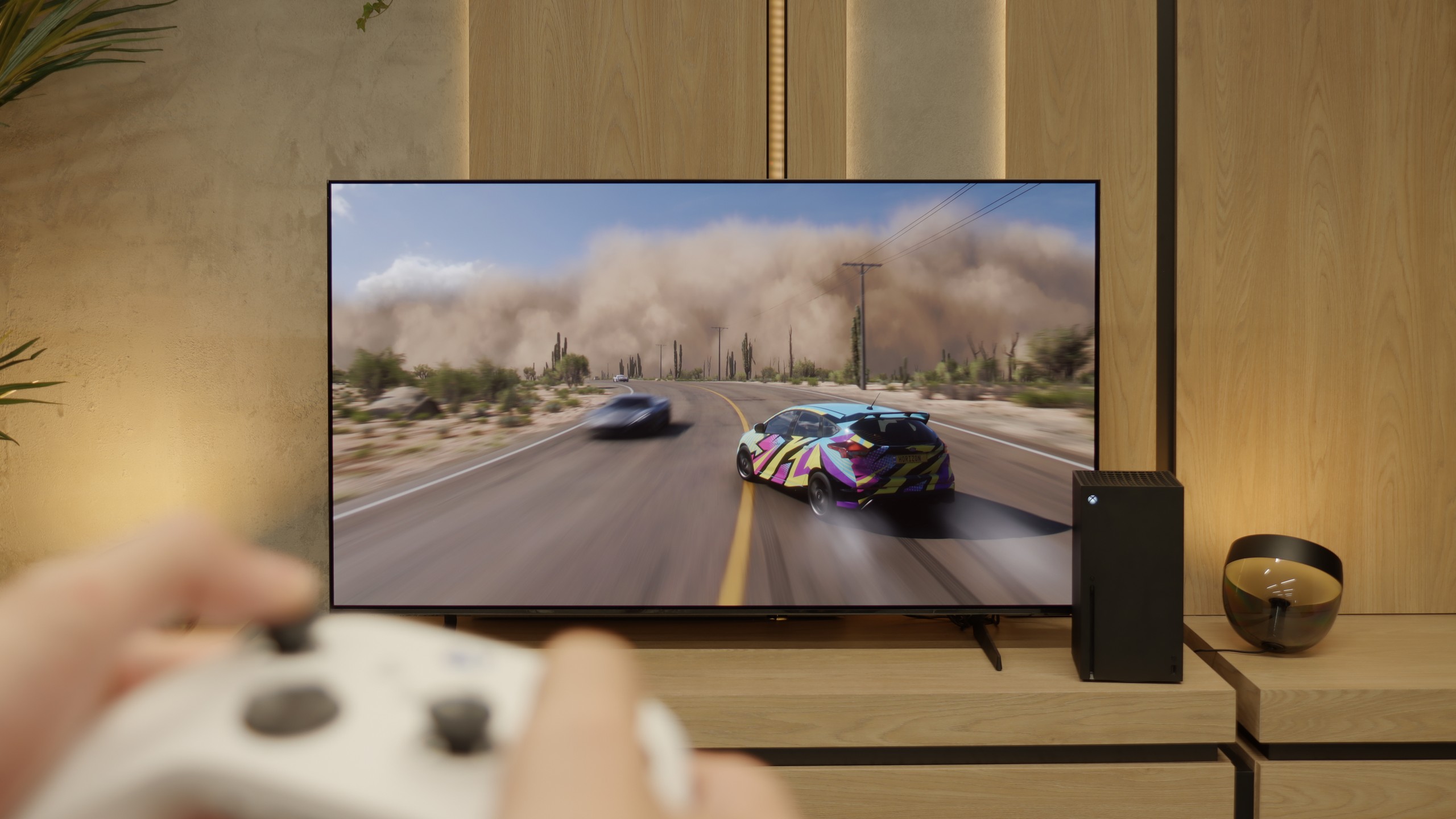
Sony X90L is a TV that performs well in terms of compatibility with consoles and features for gamers. Its 120 Hz panel and two HDMI 2.1 ports with a bandwidth of 48 Gb/s allow for smooth playback of high-resolution games at high frame rates. Gamers can also take advantage of the ALLM feature, which automatically switches the TV to low latency mode, and VRR, which ensures smooth gameplay without frame tearing. The Game Bar is an added bonus – an intuitive tool that provides quick access to essential settings and gaming features, making it easier to control the gameplay.
Unfortunately, when it comes to HDR in games, the Sony X90L has its limitations. It lacks support for HGiG, a standard that many gamers consider crucial for accurate HDR representation in games. While the TV supports Dolby Vision, which theoretically could enhance image quality in games, the practical implementation of this feature is problematic. Dolby Vision in game mode comes with very high input lag, making gameplay less comfortable and precise movements more difficult. Additionally, Dolby Vision cannot be enabled alongside VRR. This means that despite numerous advantages, gamers seeking the perfect HDR in games may feel unsatisfied.
S85F has practically everything on board to become the dream screen for gaming. Four full HDMI 2.1 ports with a bandwidth of 48 Gb/s, support for VRR, ALLM, a super-detailed Game Bar that clearly shows all parameters – plus a gem in the form of Game Motion Plus. This motion smoother makes animation in games more enjoyable, while input lag increases slightly. It's a rare combination, and that’s a big plus for Samsung.
Perhaps Samsung will fix this in the next update – and we have high hopes for that. Because if HGiG comes back, the S85F will become nearly the perfect TV for gamers.
Input lag
8.7/10
10/10
SDR
HDR
Dolby Vision
Input lag in Sony X90L can be rated as decent, although it’s not outstanding. In Dolby Vision mode, the television operates only at 60 Hz, and the high input lag complicates matters because it makes gameplay practically unplayable. For games at the popular 60 Hz frequency, the input lag is around 25 ms – this is an acceptable result, but for more demanding players, it may turn out to be disappointing.
Those more advanced players who have equipment supporting higher refresh rates can expect better results. With a 120 Hz signal, the input lag drops to around 12 ms, which provides significantly better responsiveness and smoother gameplay, meeting the expectations of more demanding users.
Here, dear gamers, the S85F shows its claws. 5 ms with 120 Hz content and around 10 ms with 60 Hz are results that can be described in one word in the world of televisions – phenomenal. This means that the response to our movements is practically instantaneous. We press the button, and the action on the screen happens without any delay, as if the television can read our thoughts. In dynamic games, where a fraction of a second can decide victory or defeat, such values make a huge difference. There's no question of a nervous "wait" for the image to catch up with our movements. The S85F gives us the feeling that everything is under our complete control – and that's how it should be in equipment that aspires to be the ideal screen for a gamer.
Compatibility with PC
7.4/10
7.6/10

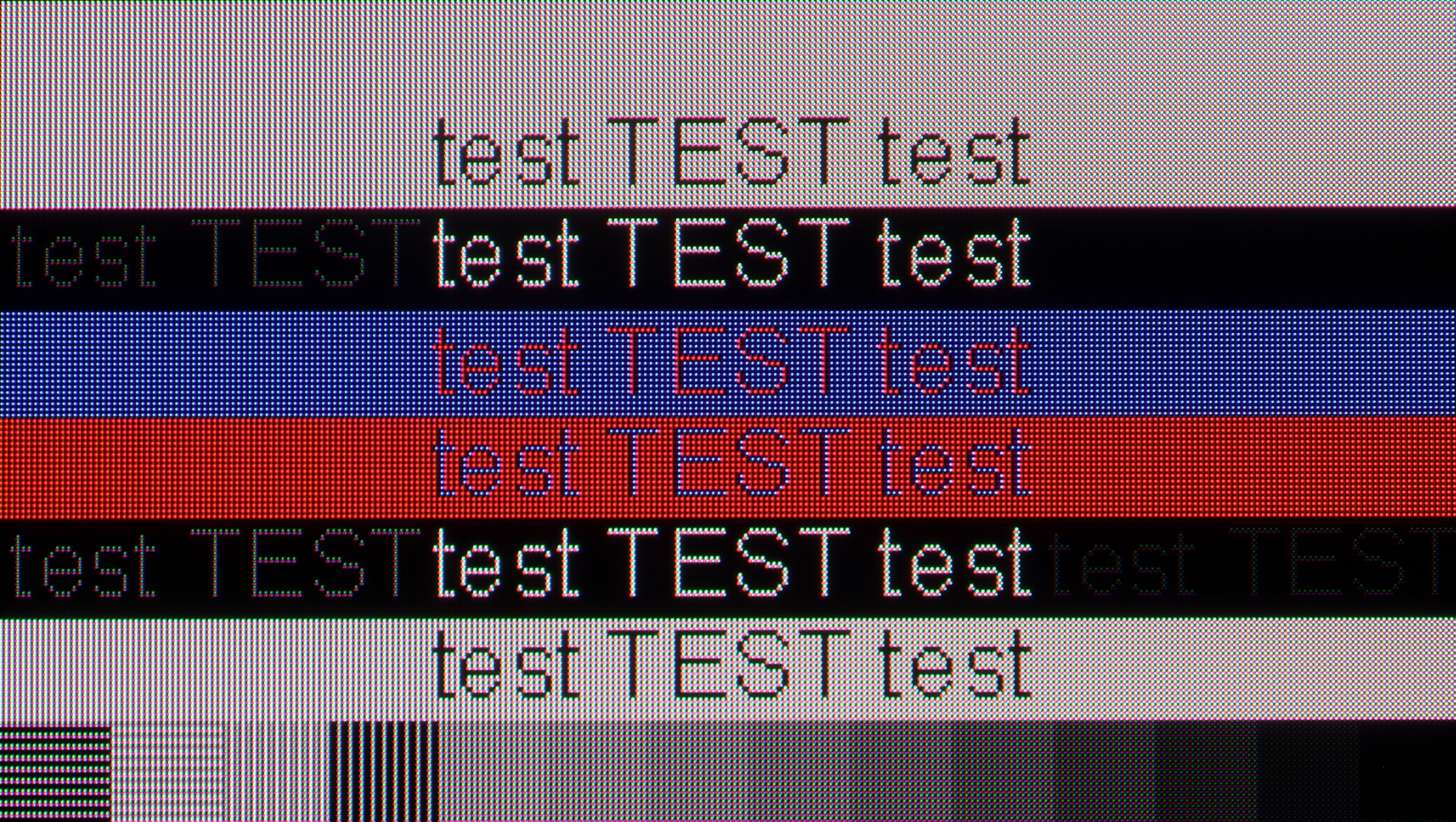
Collaboration with a PC in Sony X90L is at a good level. The X90L television supports chroma 4:4:4, which provides quite good text visibility, essential for work or browsing content on a large screen. Although there are minimal issues with font readability on a dark background, it is not problematic enough to be a significant concern in everyday use.
An additional advantage for PC users is the 120 Hz refresh rate and support for G-Sync. This means gamers can expect smoother gameplay without the effects of stuttering or tearing, which significantly enhances comfort and gaming experience.
If you're planning to connect the S85F to a computer, we have good news – this television is perfect for that. Low input lag and a 120 Hz panel make gaming on PC a pure pleasure. Whether we're talking about dynamic shooters or more relaxed RPGs, the response is instantaneous, and the smoothness of the animation can draw you in for hours on end.
Of course, there’s no rose without thorns. Due to the diamond pixel layout in the QD-OLED panel, there is a slight "rainbow icon" effect, particularly noticeable when sitting close to the screen. Fortunately, this is more of a detail that most of you won’t mind in everyday use. Especially since, thanks to the proper implementation of 4:4:4 chroma, the readability of fonts is at a very good level – documents, websites, and text editors simply look as they should.
Viewing angles
2.9/10
9.8/10
The viewing angles on the Sony X90L are unfortunately very poor, which is typical for VA panels. The image quality deteriorates when viewed at an angle, which can be problematic when watching from a greater distance or with a larger group of people. It's a shame the manufacturer didn't apply a coating to widen the viewing angles, as this could significantly improve this aspect and make the TV more versatile for different room layouts.
Here, dear readers, the S85F reaches the absolute peak. The viewing angles are phenomenal – some of the best you can get in a TV today, and it’s thanks to the unique QD-OLED panel from Samsung Display. Of course, WOLED panels can also maintain a high level in this regard, but let’s not kid ourselves – what the QD-OLED shows in the S85F is even more impressive. Colours, contrast, and brightness remain practically unchanged even when viewing the screen from a very large angle. It’s the kind of television where you don’t have to fight for the “best spot on the couch” – everyone will see the picture in all its glory, no matter where they’re sitting.
TV efficiency during daytime
7.8/10
5.1/10

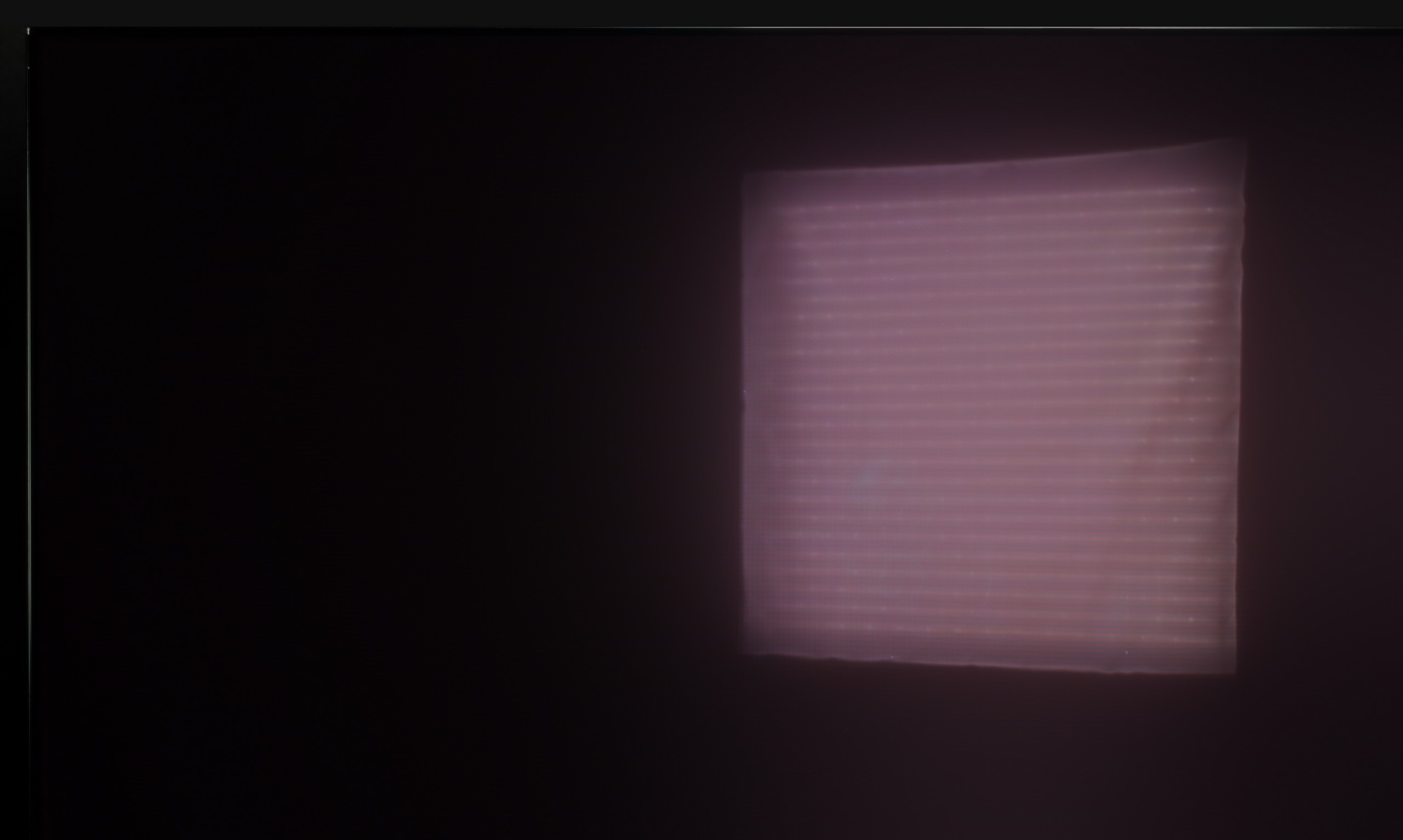


Matrix brightness
Average luminance SDR
Samsung S85F OLED: 317 cd/m2
Sony X90L: 784 cd/m2
The performance of the Sony X90L television during the day is very good. The satin matrix effectively reduces reflections, which minimizes glare and keeps the image clear even in bright rooms. An SDR brightness level of 785 cd/m² allows for comfortable viewing of standard television and lower quality materials regardless of the time of day. This means that the X90L will work great in both well-lit living rooms and in sunnier spaces.
We really liked the saying "no rose without thorns," and it fits perfectly with QD-OLED TVs. Especially when we look at their performance in highly lit conditions. As you may notice, under very intense light, the surface of the panel can take on a slightly cherry hue. The effect is subtle in the case of the S85F, but in extreme lighting conditions, black can appear a bit worse than in WOLED panels. But – and this "but" is key here – QD-OLED suppresses direct light reflections much better. This means that reflections will be less bothersome, and the picture will retain clarity even when something bright reflects on the screen. You win some, you lose some.
As for brightness, the S85F is a moderately bright OLED. It’s not a model designed for extremely sunny living rooms. If you plan to place it in a very bright room, we recommend considering blinds or placing it in a location that at least partially protects it from direct light.
Details about the matrix
Subpixel Structure:


Panel uniformity:


TV features
8.5/10
7.2/10
- HDMI inputs2 x HDMI 2.0, 2 x HDMI 2.1 48Gbps0 x HDMI 2.0, 4 x HDMI 2.1 48Gbps
- Other inputsRCA (Chinch)Toslink (Optical audio)
- OutputsToslink (Optical audio), eARC (HDMI), ARC (HDMI)Toslink (Optical audio), eARC (HDMI), ARC (HDMI)
- Network InterfacesWi-Fi 2.4GHz, Wi-Fi 5GHz, Ethernet (LAN) 100MbpsWi-Fi 2.4GHz, Wi-Fi 5GHz, Ethernet (LAN) 100Mbps
- TV receptionDVB-T, DVB-T2, DVB-S, DVB-S2, DVB-CDVB-T, DVB-T2, DVB-S, DVB-S2, DVB-C
Classic features:
- Recording to USB (terrestrial TV)
- Recording programming
- Picture in Picture (PiP)
- RF remote control (no need to aim at the screen)
- Backlit remote control
- Teletext
- Audio only mode
- Possibility to connect Bluetooth headphones to the TV
- Possibility to simultaneously use Bluetooth headphones and the TV speaker
Smart features:
- AirPlay
- Screen mirroring (Windows Miracast)
- Wyszukiwanie głosowe
- Voice search in native language
- Ability to connect a keyboard and mouse


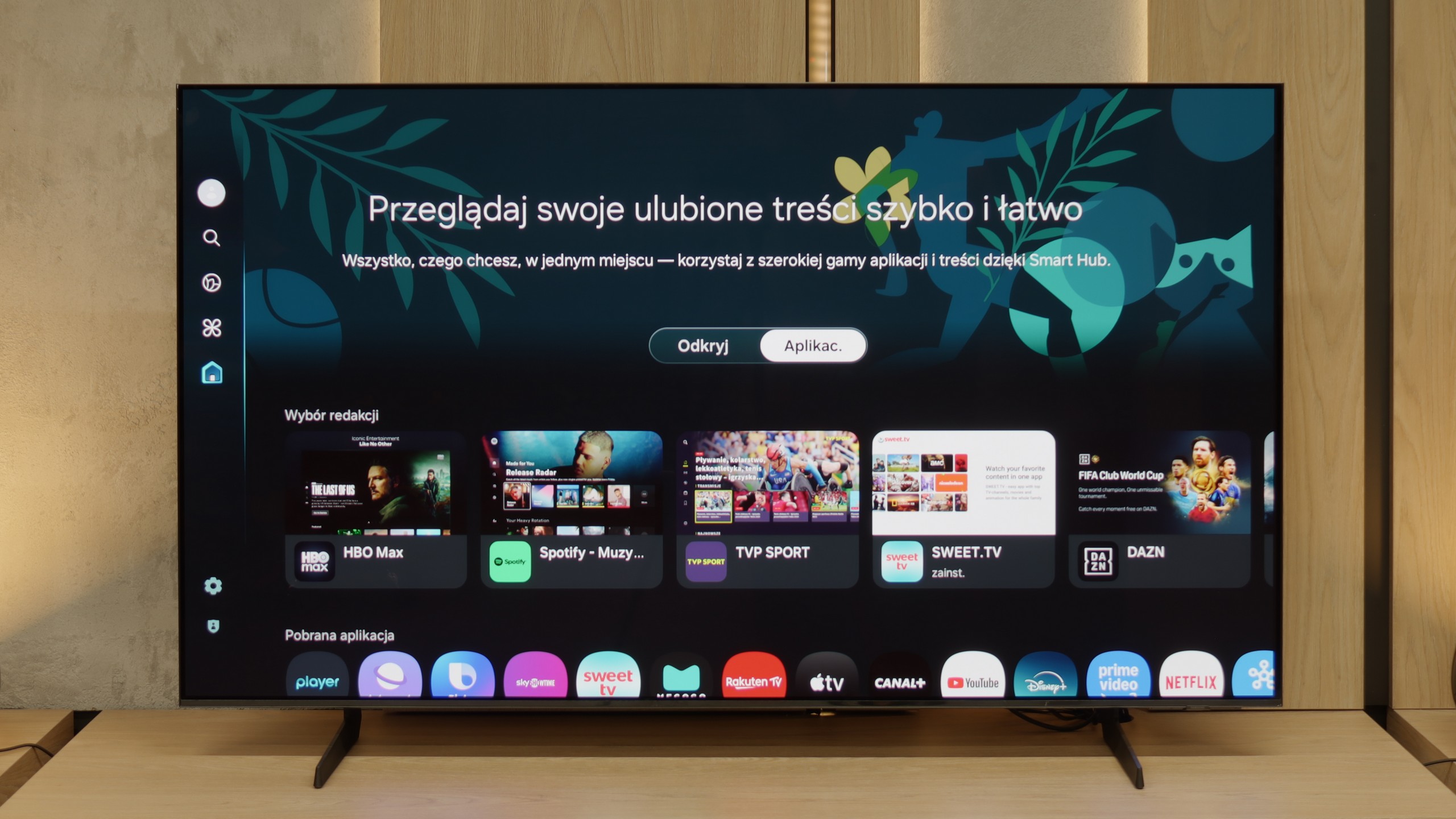
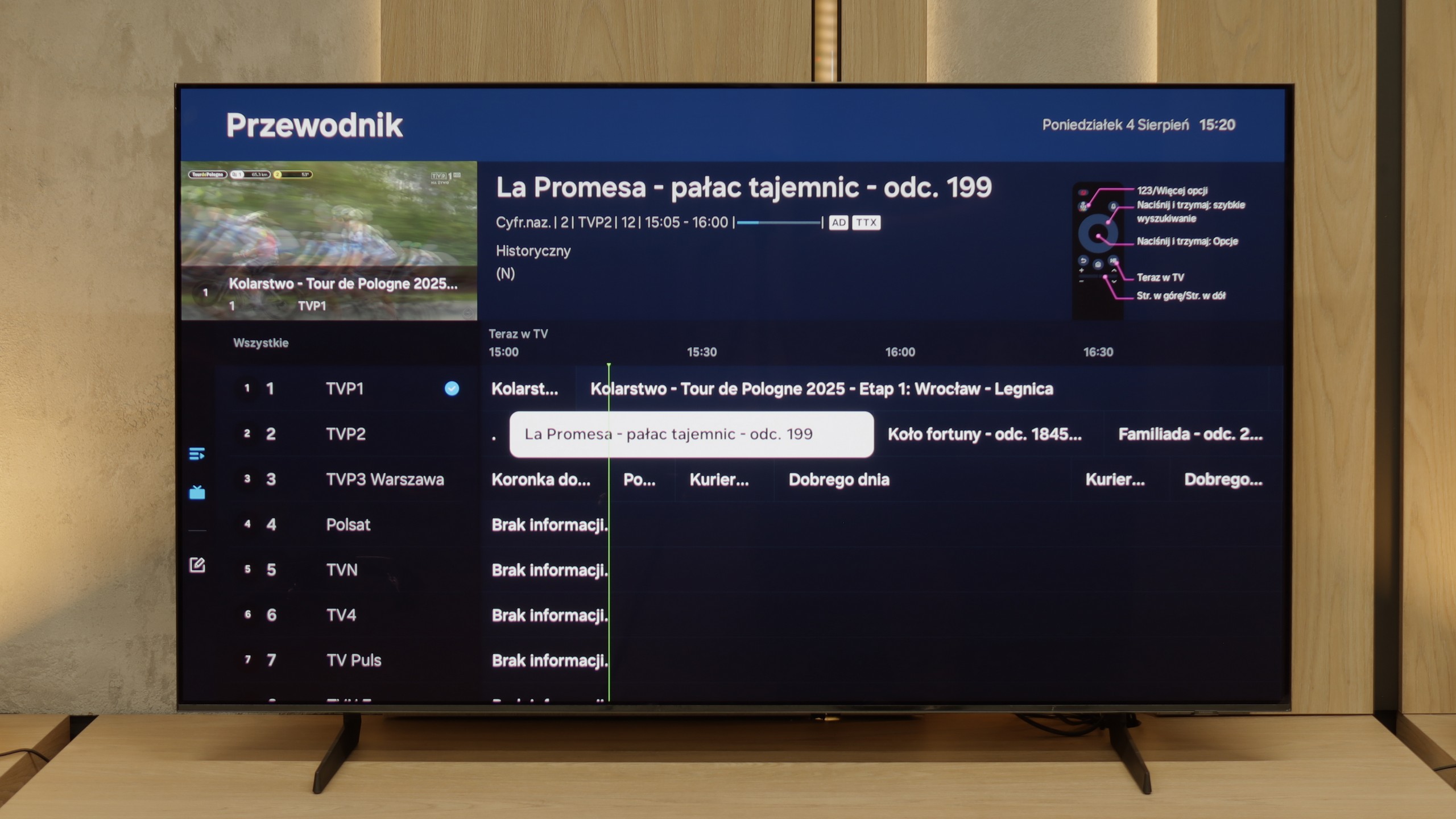
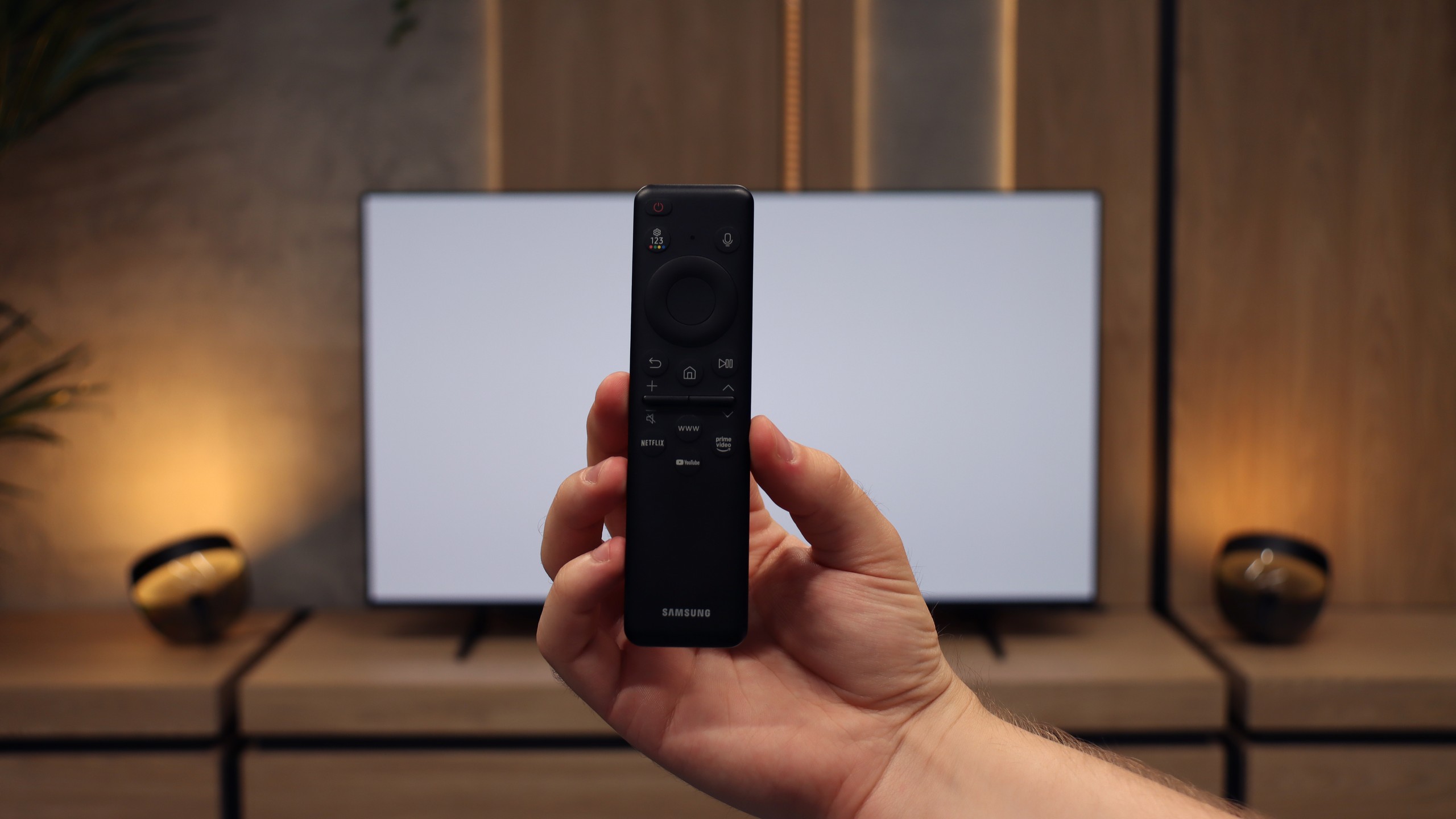

Sony X90L offers a rich set of features, starting with the Google TV system, which is the heart of entertainment. This solution provides access to a vast array of apps and streaming services, and the interface is intuitive and straightforward. With the support of a voice assistant, using the television becomes even more convenient – just one command is enough to find your favourite movies, series, or music. Google TV operates smoothly and allows for full personalisation, making everyday use pleasant and hassle-free.
The television also offers a range of practical features. It supports AirPlay and Miracast, enabling easy content sharing from mobile devices. Additionally, you can connect other devices via Bluetooth, which enhances versatility and user-friendliness. For those who prefer traditional TV viewing, there’s even a recording feature available without the need for an external decoder, which is a significant advantage for fans of live programs.
In terms of design, Sony X90L may not be the slimmest, but its appearance is impressive thanks to the metal frame that adds elegance. The television comes with a stand that can be set up in three different ways, allowing you to customise its placement to suit various spaces and user preferences.
Features of the classic S85F television
The S85F was not really designed with fans of classic television in mind. We won’t find a PiP function here (which is somewhat surprising, as Samsung typically offers it) or the ability to record programs onto USB from the built-in tuners. Fortunately, the basics are there – teletext and a clear channel guide – so it’s more than sufficient for regular, everyday viewing. The included remote, although simple at first glance and lacking a numeric keypad, allows for control of multiple devices. This means that when connecting, for example, a Canal+ decoder, you don’t need two remotes on the table – the one for the television is quite enough.
SmartTV S85F: Tizen
The smart part is a completely different story. Tizen is one of the most comprehensive operating systems in televisions. It operates smoothly, supports all popular internet functions – from screen mirroring to AirPlay to voice search. The strongest point of Tizen is its integration with the SmartThings app, which can act as a control centre for the entire home. Of course, like any closed system, Tizen has its limitations – for instance, a smaller app library compared to GoogleTV. However, looking at the current list of available applications, it’s hard to point out anything that might actually be missing.
Playing files from USB
8.7/10
9.1/10
Supported photo formats:
Maximum photo resolution:

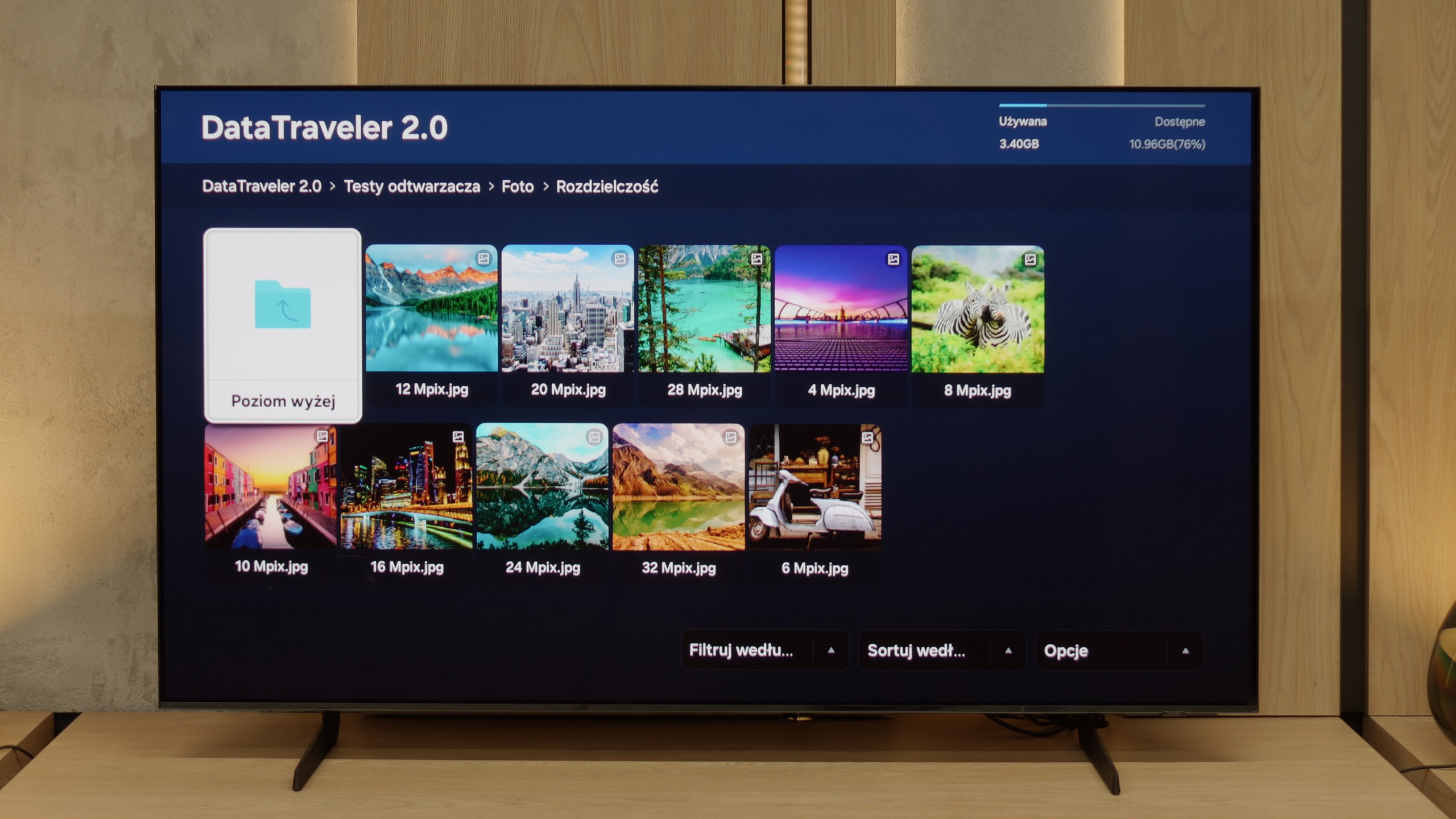
Sony X90L easily handles playback of most popular file formats from USB, which is a big plus for those who often reach for external content. However, there is a minor downside – the built-in player does not allow for changing the font colour in subtitles, which may be problematic for some. Fortunately, thanks to the advanced Google TV system, users have a wide range of options. You can easily install alternative media players that offer more personalisation options.
The built-in media player in the S85F performs excellently – practically everything you throw on a USB stick or hard drive will be played back without the slightest issue. Minor shortcomings only arise in the support of some less common photo formats, but for the vast majority of you, this will be more than sufficient. Therefore, it can be confidently stated that for home use, the built-in player is more than solid.
Apps
9.6/10
8.7/10














































Sound
7/10
7.2/10
- Subjective sound quality:7/107.2/10
- Dolby Digital Plus 7.1:
- Dolby True HD 7.1:
- Dolby Atmos in Dolby Digital Plus (JOC):
- Dolby Atmos in Dolby True HD:
- DTS:X in DTS-HD MA:
- DTS-HD Master Audio:
The sound on the Sony X90L is pleasant and clear, and the presence of bass makes the audio fuller. The television handles music playback well, offering satisfying audio experiences. An additional advantage is the support for Dolby Atmos and DTS technology, which provide a more spacious and immersive sound. This makes movies, games, and music richer and more realistic, creating better experiences for the user.
The built-in speakers rated at 20 W on paper may not seem impressive, but in practice, the S85F can be surprising. It sounds really pleasant, and at times you can even pick up a subtle bass, which is not a given in this class of speakers. The TV does not support the DTS format, which unfortunately became a standard for most manufacturers by 2025. A nice surprise is the support for Dolby Atmos. Of course, talking about "spatial" sound with two speakers located at the bottom of the casing would be a slight exaggeration, but it's good that Samsung offers such a feature in this model at all.


